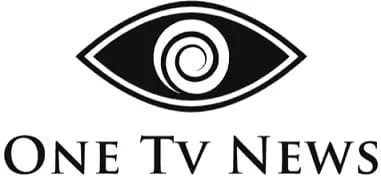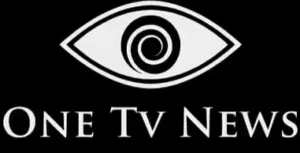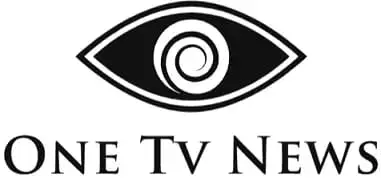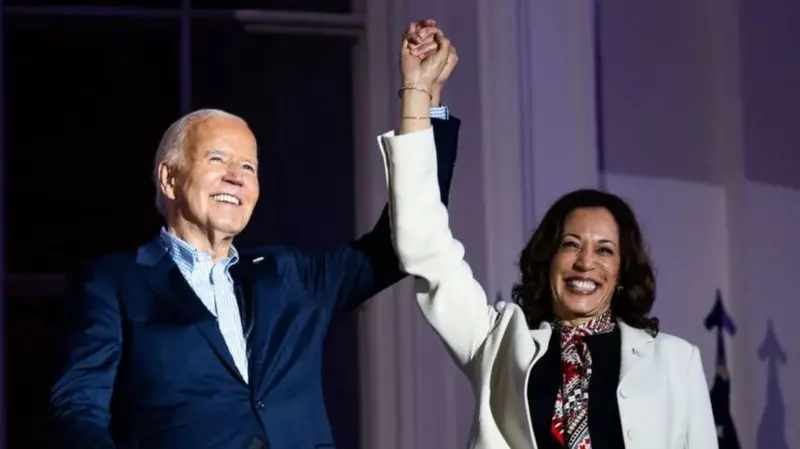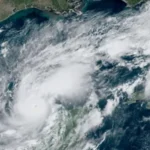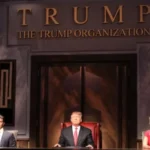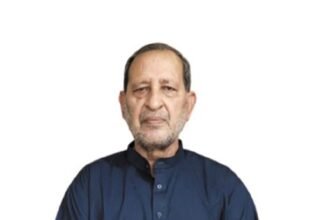How Are Vice Presidential Candidates in America Vetted?
- Kamala Harris’s Vice-Presidential Candidate Vetting Process: A Closer Look
- Unpacking the Intense Scrutiny of Vice-Presidential Candidates in the U.S.
- The Controversial Questions Behind Choosing a Vice-Presidential Nominee
- How Personal History Shapes the Vetting of Vice-Presidential Candidates
Kamala Harris, the Democratic Party’s candidate for the upcoming elections in November, is currently vetting potential vice-presidential candidates. One former candidate describes the seriousness of this process as akin to examining a person’s physical attributes through a telescope.
Have you ever paid for sex?
Have you ever paid for an abortion?
Have you ever had a homosexual relationship?
These are just some of the questions that have arisen during the vetting process for vice-presidential candidates in the past.
All potential candidates for the Democratic ticket must answer nearly 200 questions.
Officials and lawyers from the Democratic Party conducting this vetting process often have about a month to find evidence against vice-presidential candidates. Those connected to Kamala Harris’s campaign have only a few days left to select a vice-presidential candidate.
Kamala Harris herself went through this same process four years ago to become the Vice President of the United States. She is now part of a selection process to choose a vice-presidential candidate from nearly a dozen individuals, including Governor Josh Shapiro and Senator Mark Kelly.
Potentially, Pete Buttigieg is also among them. When asked last week if the candidates vying for the Democratic vice-presidential ticket are aware that they are being vetted, he smiled and replied, “Yes, you know.”
When a cabinet is being formed, the FBI conducts background checks on all potential secretaries. However, the selection process for vice president is more complex as the FBI is not involved.
Candidates for the vice-presidential ticket undergo checks on their tax records and medical history. Their social media accounts are scrutinized, and not only their children’s but also their grandchildren’s social media posts are examined.
During this process, even the slightest indication of extramarital relationships and other secrets is thoroughly reviewed. The past speeches and writings of potential candidates are scrutinized word for word.
Jim Hamilton, a Democratic Party lawyer who has previously worked on campaigns for John Kerry, Barack Obama, and Hillary Clinton, told the BBC that the notes taken during the vetting process for vice-presidential candidates are kept under “a strict veil of secrecy.”
Hamilton led a team of 200 lawyers during Hillary Clinton’s campaign, tasked with assisting the Democratic Party in selecting a vice-presidential candidate.
At that time, Hillary Clinton selected Senator Tim Kaine from Virginia as her vice-presidential candidate.
Hamilton notes, “Everyone has something in their past that they prefer not to discuss quickly, but you would be surprised how amicably they provide all the answers during this process.”
Evan Bayh was among those considered for Barack Obama’s vice presidency in 2008. He recalls the vetting process as being like “examining a person’s physical attributes through a telescope.”
He shared with the BBC that “a whole team was assigned to me: an accountant, a lawyer, and a physician.”
Former Senator Evan Bayh, from Indiana, recounts that “they spoke not only with my wife but also with my father.”
One morning in Washington, TV crews were stationed outside Evan Bayh’s home as he watched a program on MSNBC during breakfast. The host remarked that the bowl of yogurt and oatmeal in front of the senator looked “quite delicious.”
The head of the team vetting potential vice-presidential candidates promptly called Evan Bayh to inform him that a false rumor was circulating online suggesting he had undergone psychological treatment once.
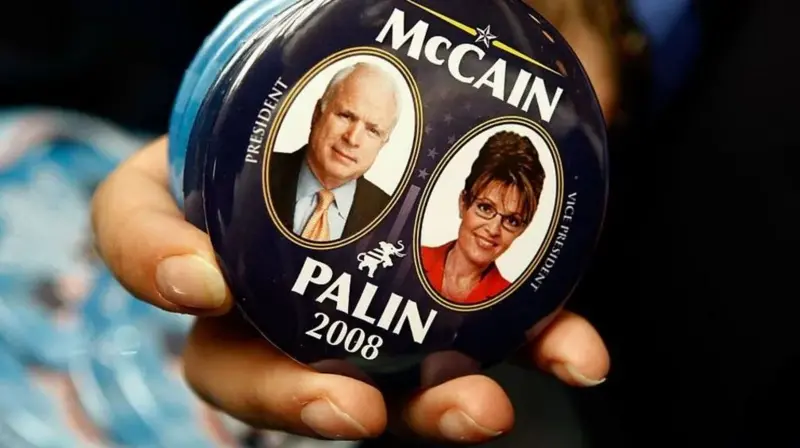
Bayh humorously recounted, “I said that’s not true. But it might be true if you don’t rush to a decision.”
He adds that among about 20 names, Joe Biden and he were ultimately chosen for the vice-presidential ticket.
He says that in August of that year, “with extreme secrecy,” he was taken to St. Louis, Missouri, where he met the future president. Their conversation lasted nearly three hours.
“There was a stack of documents about three feet high, and Obama pointed to it, saying that he had read all these reports and found nothing that troubled him.”
Bayh recalls that Obama said, “If there’s anything my team missed, you should let me know, because it will eventually come out.”
“I told him that you all have worked hard on this. But there are two or three things I should mention to you,” and he then disclosed them.
According to Bayh, “He looked at me and said, ‘Is that all? What kind of life have you lived?'”
Bayh did not disclose what he mentioned to Obama, only that they pertained to some family matters.
Ultimately, Obama chose Joe Biden as his vice-presidential candidate. Later, Biden’s campaign manager, David Plouffe, attributed a statement to President Obama that they had to choose between Bayh and Biden, and the decision was made by “flipping a coin.”
Sometimes, those conducting the vetting may ask unexpected questions that reveal a “red flag.”
Gary Ginsberg was part of Bill Clinton’s campaign in 1992. He told the BBC that Al Gore was asked whether he had any friends, and it seemed as though his words got lost somewhere.
In response to the question about friends, Gore could only name his brother-in-law and two congressmen, indicating he had very few friends, surprising some people.
However, among about 50 candidates, Al Gore was ultimately chosen as the vice-presidential nominee, and Bill Clinton won the election, making Gore his vice president.
The vetting process for vice-presidential candidates is complicated because it is generally frowned upon to ask personal questions of a senator or governor.
However, there have been past mistakes during vice-presidential candidate elections that changed the vetting process entirely.
In 1972, Democratic presidential candidate George McGovern rejected his vice-presidential nominee just 18 days after his selection based solely on a two-minute phone call and chose Senator Thomas Eagleton from Missouri as the new nominee.
Immediately, reports began to surface in the media that Senator Eagleton had suffered from depression in the past and had undergone electric shock treatment.
At the time, Nixon’s associates would ask journalists, “How can you trust a man who chose a madman?”
In the November election that year, President Nixon decisively defeated the Democratic candidate.
A similar incident occurred in 1984 when Democratic presidential candidate Walter Mondale faced Ronald Reagan. He selected Geraldine Ferraro as his vice-presidential nominee.
However, it was later revealed that financial dealings related to Geraldine’s husband in real estate had harmed Mondale’s campaign.
In that election, President Reagan won in all 49 states and was re-elected.
There are times when a potential vice-presidential candidate may shine like a dazzling diamond during auditions, but their luster fades once they step onto the political stage.
This happened in 2008 when John McCain’s team was given 72 hours to vet Sarah Palin, then the governor of Alaska. She was asked what she would do if the U.S. faced a national security crisis and the president were unable to function due to surgery.
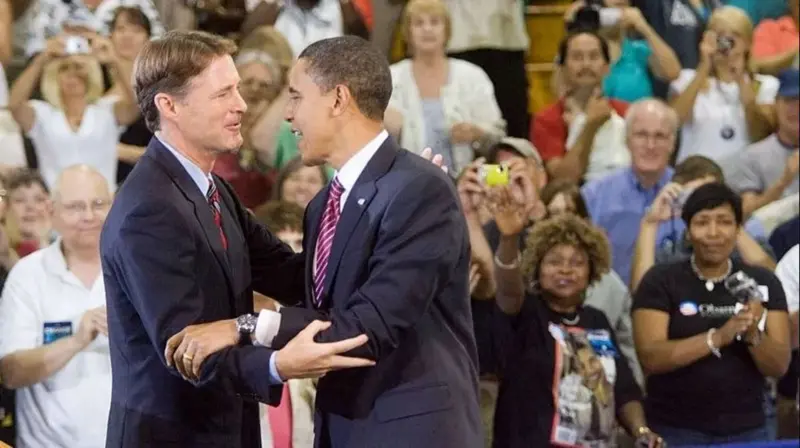
In this hypothetical scenario, the Acting Director of National Intelligence approaches President Palin and tells her they have located Osama bin Laden. His aircraft is in the air, and they are prepared to kill the al-Qaeda leader, but civilians could be harmed in the attack.
The hypothetical Director of National Intelligence asks Palin, “Would you authorize this attack?”
Palin responded, “Yes, I would authorize the attack because I am the President of the United States, and this (Osama bin Laden) is our enemy who has taken the lives of three thousand Americans. Then, I would kneel and apologize for the loss of innocent lives.”
People were quite impressed with her answer. However, when she received the vice-presidential ticket, she struggled to answer a simple question from a reporter about which newspapers she reads.
The final decision to grant the vice-presidential ticket always rests with the presidential candidate.
George H.W. Bush was among 15 vice presidents who later became presidents of the United States. In 1988, he chose Indiana Senator Dan Quayle as his vice-presidential candidate.
Bush won that election, but Kate Anderson Brower writes in her book that Quayle was viewed not as an asset but as a burden.
During the campaign, a reporter on the plane asked Quayle, “What is your favorite book?”
To find out the answer, he turned to his wife, Marilyn, and asked, “What is my favorite book?” The political aides around him appeared to be astonished.
